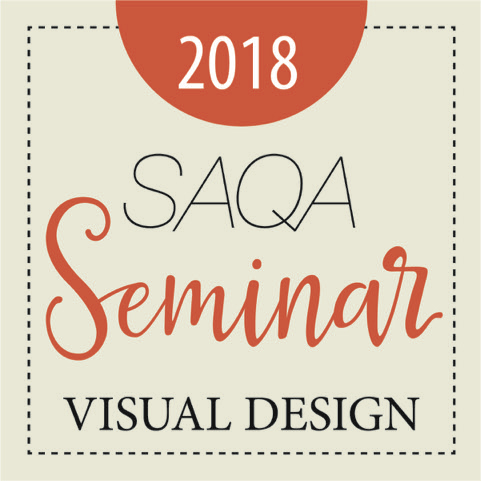SAQA Seminar - Unit 4
Artist Q&A with Clara Nartey
Don't miss this from Clara: How Self-Critiquing Your Artwork Makes You Grow
Tell us about your artwork and artistic career.
Trained in computer science and finance, my creative path to the textile arts started by chance. In my quest to learn what I could do with a recently purchased sewing machine, I discovered textile arts. With that discovery came the realization that a line – an element in design- can be represented by stitch. It has since become the focus of my explorations in textiles – figuring out how to use machine stitches as though they were drawn lines.
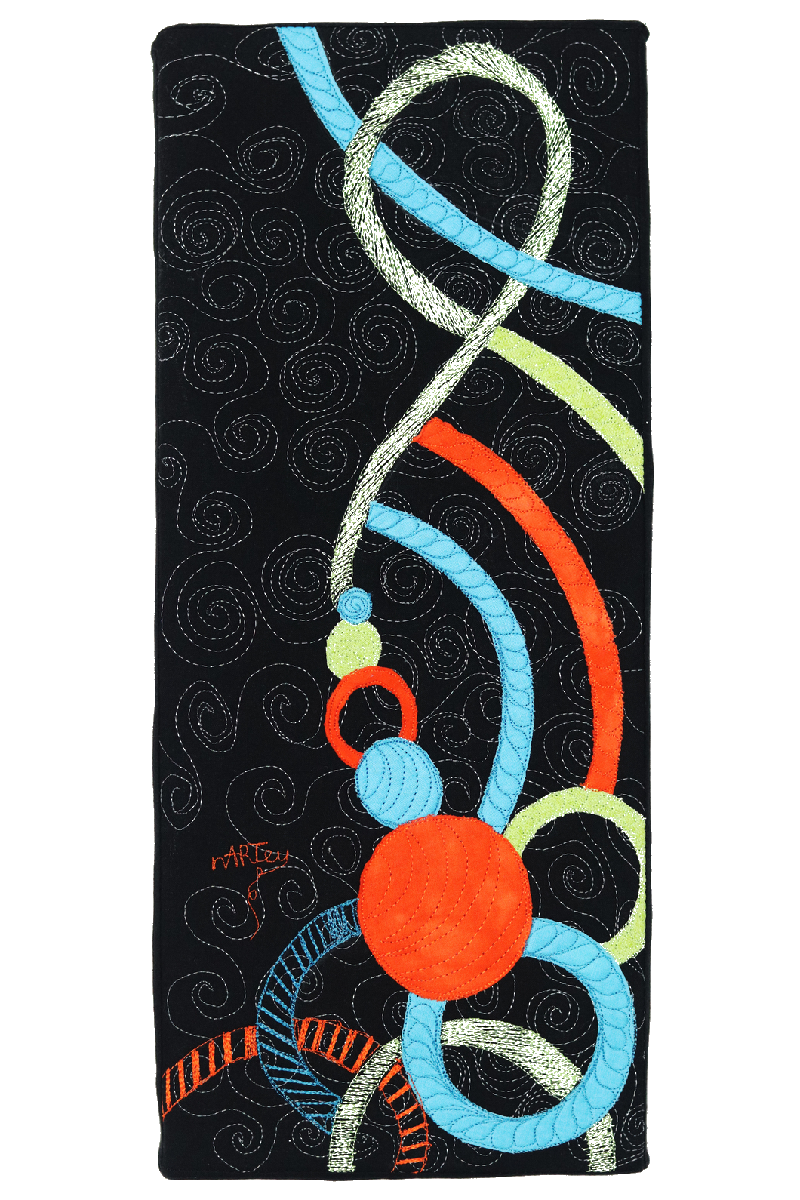
Swirlies #1 by Clara Nartey
My artwork provides a space for me to play and connect with my inner artist, to express ideas, try things out, and make meaningful work.
It’s become my mission to help other people discover this freedom of expression by uncovering their creative abilities. I run a blog where I make this possible for my readers.
Is there a particular question you ask yourself or an idea that you keep in mind when you are focusing on the visual design of an art quilt?
I ask myself these questions. What is the main theme? When a viewer looks at the work will they see my focus or will they see something else? Am I using a technique just because I can or am I using the technique as a tool to enhance my design. My overarching question is this. Is my composition, as a whole, interesting/engaging?
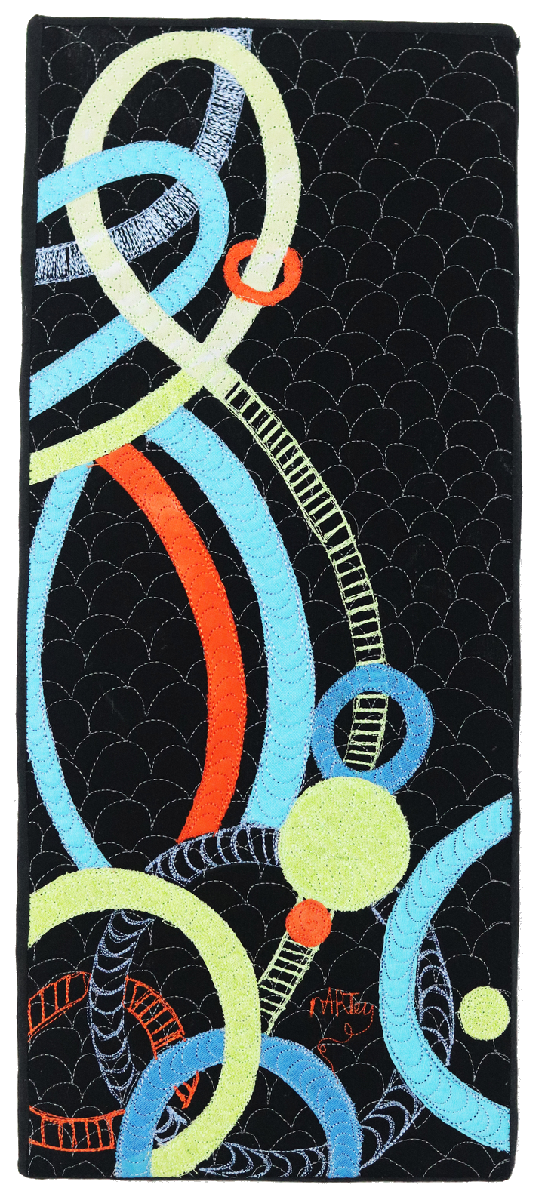
Swirlies #
How do you evaluate or critique your work?
I evaluate my work as I go. I don’t wait to the end before I evaluate. I often say, I probably spend more time staring at my work (evaluating it), than I spend making it.
One of my favorite evaluation practices is to pin my work-in-progress to my design wall every time I leave my studio. If I step out of my studio 5 times in one day, my piece goes up on the wall each of those 5 times.
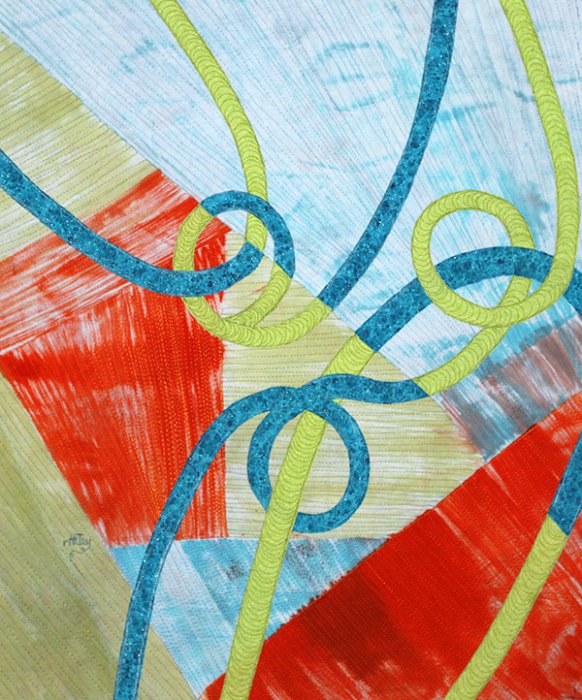
Ropes #1 by Clara Nartey
Each time I walk back into my working space I see the work with fresh eyes. There’s something about looking at the work on the wall from a distance. It gives you a different kind of perspective from the one you get when it’s on your work table or on your sewing machine bed.
Do you use the traditional elements and principles of design as a way to measure if a piece works or not?
I do use the traditional elements and principles of design to evaluate my work. The one word I keep in mind when using the elements and principles of design is “balance”. Too much emphasis on any one of the elements or principles will throw your work off. So ultimately, I seek balance in my work.
As I evaluate my work, I ask myself questions like these. How is my use of line balancing with my use of shapes? Have I balanced my design’s need for variety with the need to unify the elements? Have I taken advantage of negative space? Do I have too many disparate elements or have I tied them together with a common theme – color, shape or some other thing?
For example, if I’m working on something that has just one piece of orange fabric and all the other colors are different, then I ask myself these questions: Do I want this as a focal point? Can I repeat this orange color in other places to tie them together in the piece?
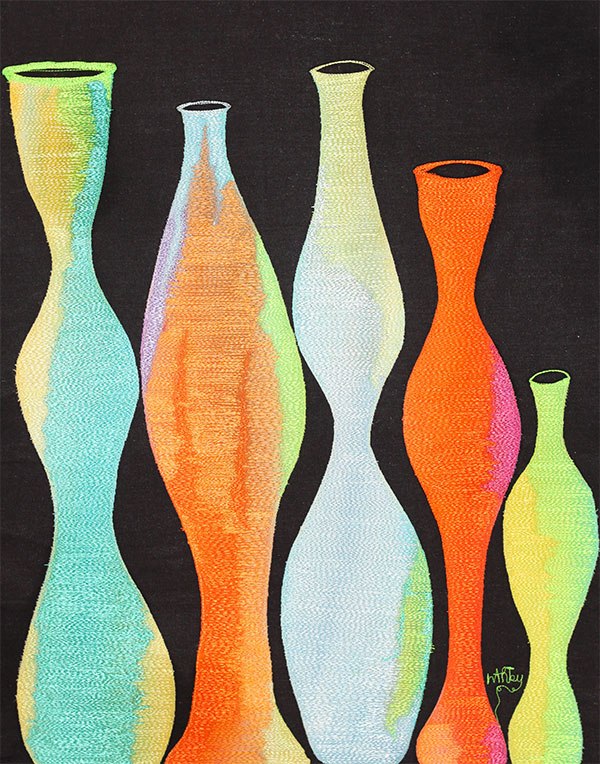
Towering Above #1 by Clara Nartey
What other ways do you evaluate the visual design of a piece?
While my work is in progress, I take photos of it with my cell phone. Then in my spare time, I browse through my photos. Seeing the work reduced to a small scale helps in assessing it’s overall composition. As I look at the photos, I’m subconsciously using my self-critiquing criteria to evaluate what I see. The observations I make inform the subsequent actions I take when I return to work on the piece.
Here’s an in-depth article I wrote on my self-critiquing process - How Self-Critiquing Your Artwork Makes You Grow.
About the Artist

Clara Nartey is an artist, a writer, and a curator whose passion is to help others reawaken their inner creativity. She is the author of the website ClaraNartey.com where she writes about creativity.
She uses threads as pencil to draw and shade, and fabrics as paint, to color between the drawn lines. Her artworks have been widely exhibited.
Nartey is a self-taught artist with a life-long love for learning. She holds a bachelor’s in Computer Science/ Statistics and Master’s in Business Administration.
« Return to SAQA Seminar main page

